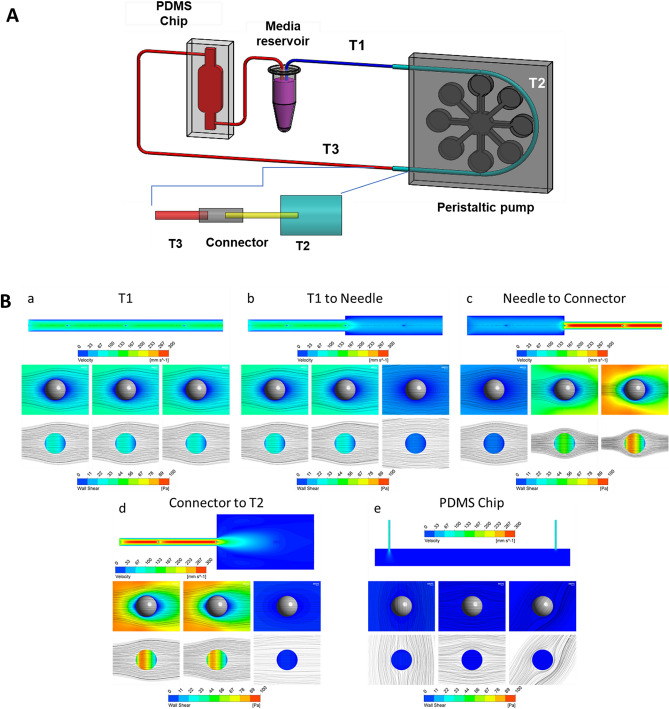Figure 2.
Variations in the internal diameter in the tubing system modifies the flow dynamics. Cancer cells can go from a static, attached state to being exposed to circulatory forces as they go from the primary tumor to their metastatic site. These different states can influence cancer cell viability and behavior. We designed a microfluidic system to recapitulate the circulatory system to simulate the drastic changes that occur in pressure and flow rate when cancer cells enter circulation. (A) Representative illustration of the microfluidic system and a segment of the tubing system with different internal diameters. (B) Simulation of flow dynamics changes due to changes in the tubing internal diameter. Flow streamlines and contours of circulatory shear stress on cancer cells that change in different segments of the system as measured by the Reynolds number (Re). (a) First tubing segment T1 (ID 0.304 mm) from the cell culture media reservoir; (b) Flow from T1 to T2 (ID 0.304 mm to ID 1.42 mm); (c) Flow from T2 to connector (ID 1.42 mm to ID 0.2 mm); (d) Flow from connector to T3 (ID 0.2 mm to ID 1.42 mm) (e) Flow through T3 (ID 0.30 4 mm); (f) Flow from T3 to the PDMS chip (ID 0.5–25mm3); (g) Flow through PDMS chip (25 mm3).

